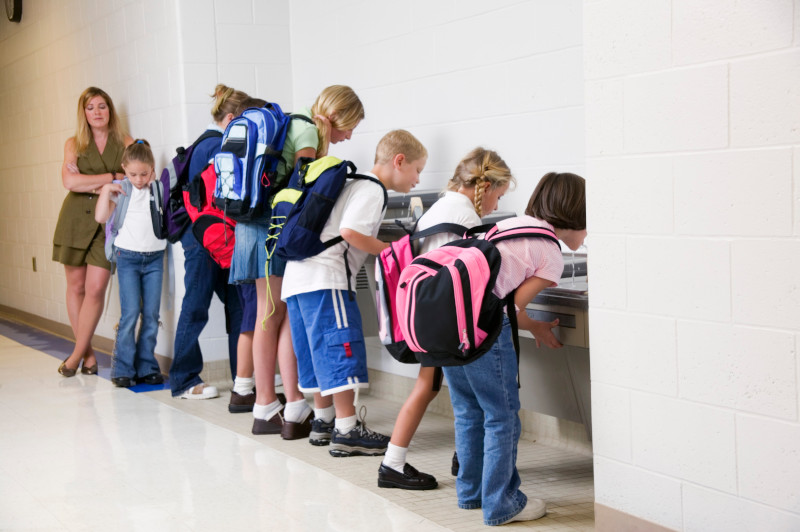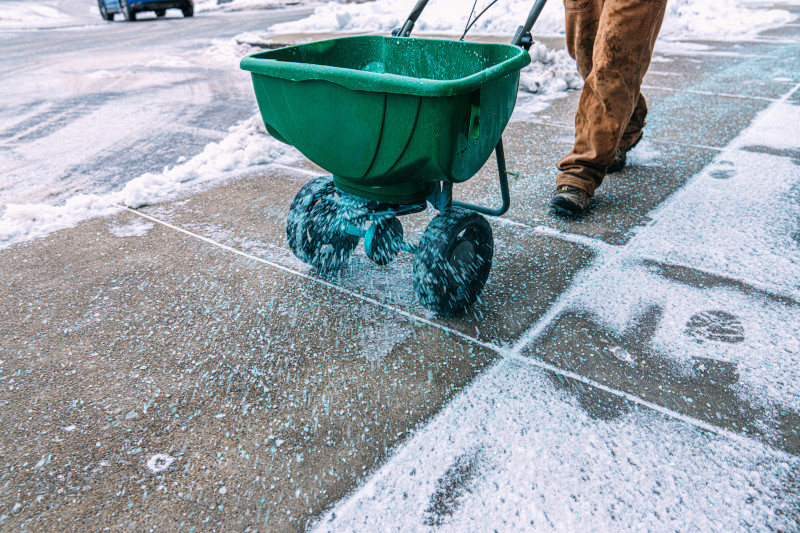Make a splash with pool safety

Swimming pools can be a great amenity for schools. They not only provide a home base for your swim team and expand physical education opportunities, but they can enrich your community through public programming. While being a real asset, a pool can also pose real hazards if the inherent risks are not addressed.
Be sure your pool facility is following these safety measures:
- Clearly post and strictly enforce safety rules for swimmers and anyone who is in the pool area.
- Require all users to provide a signed swimming pool waiver and release of liability form prior to using the pool, the parent or guardian should provide a signed acknowledgment for minors.
- Mark water depths on interior pool walls and on the deck surface.
- Clearly mark shallow areas with “no diving” signs on both the walls and deck.
- Strictly enforce the “no running” rule in the pool area.
- Walking surfaces in pool areas and locker rooms should be slip-resistant yet be comfortable for bare feet.
- Lifesaving equipment must be easily accessible. Establish an inspection and replacement schedule to make sure your lifesaving equipment is up to the task when called upon in an emergency.
- Certified lifeguards must be on duty at all times during open hours. The number of lifeguards needed depends on pool size and design to ensure all areas are monitored. An adequate ratio of qualified adult supervision should be required when small children are present.
- A supervisor should evaluate lifeguards periodically to ensure they are carrying out their responsibilities effectively.
- The pool should be cleaned regularly and a water quality test performed each day. Pool water analysis should be submitted weekly to an independent laboratory.
- Diving boards should only be used by individuals who have passed a basic swim test before being permitted to swim in the diving well. A separate certified lifeguard should be present to monitor activities in the diving well.
- Place a line across the bottom of the pool at the slope break, so swimmers can easily see where the slope to the deep end begins.
- All the electrical equipment and wiring should meet the National Electrical Code Standards for swimming pool locations. This includes the proper grounding and bonding of electrical equipment and use of ground fault circuit interrupters.
- When the pool is not in use, the entrance doors and any doors that may be accessed through locker rooms must be locked.
Pay special attention to your pool’s drain covers to ensure they are compliant with federal law. The Virginia Graeme Baker Act (VGBA) requires public pools to be equipped with special drain covers intended to prevent suction from pulling a swimmer toward the bottom of the pool and trapping them underwater. These special drain covers are commonly referred to as anti-entrapment or VGBA drain covers.
These drain covers have a service life specified by the manufacturer, and the required replacement schedule should be strictly followed. Also, be aware of any recalls on the devices. If you can’t verify the age, type or installer of your drain covers, you should consider having them replaced to prevent a tragedy in your pool. Going forward, be sure to document and keep on file all information pertinent to the installation of the device as well as to set a future reminder of when the devices will need to be replaced again.
Chemicals, such as chlorine and bromine, help keep your pool clean and germ-free. However, they can pose a hazard if not handled and stored appropriately. The Centers for Disease Control offers recommendations to prevent pool chemical injuries, which includes having a properly designed chemical storage area and using the right personal protective equipment when handling chemicals. Be sure to always follow the manufacturer’s recommendations for the storage of any potentially hazardous chemicals, including those used for your pool.
Take a trip to your pool area soon and try to look at it as if you’ve never seen it before and make sure all the basics in and around the pool area have been addressed.
Check out additional swimming pool safety resources here.




